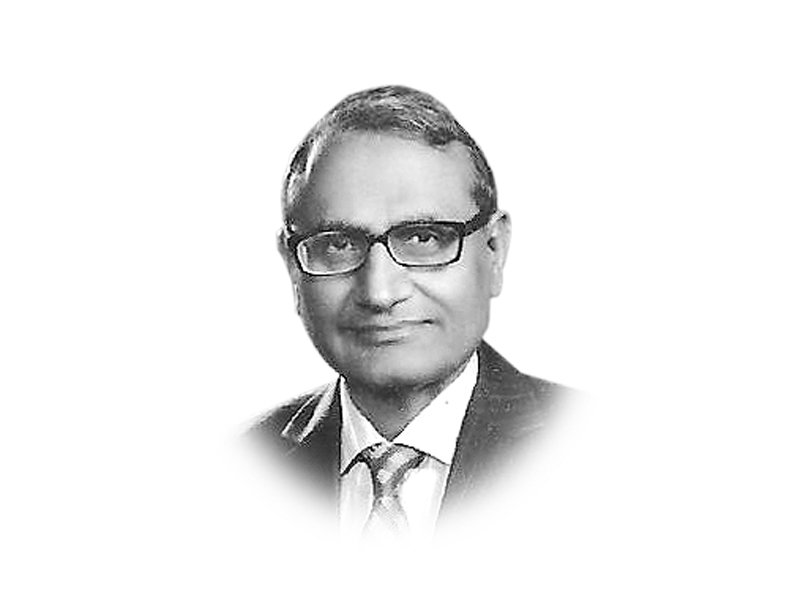
Recession in common parlance refers to bad economic times reflected in the daily experience of eroding earnings and falling work opportunities. Economists follow a thumb rule suggested by Julius Shiskin in The New York Times in 1975: an economy is in recession when the gross domestic product (GDP) declines for two successive quarters. It makes sense for developed economies where the difference between GDP growth and GDP growth per capita is negligible due to negligible population growth. In developing economies, a GDP growth of two per cent and below means zero or negative growth per capita, given high population growth. Pakistan suffered a decline in its GDP only once in her entire history (1951-52). Even at the height of the Bangladesh crisis in 1971, GDP growth was positive at 1.23 per cent.
Does that mean our economy is never in recession? International financial institutions apply the rule of three per cent growth when it comes to global recession because most developing economies have low but positive growth rates. In our case, the economy displays a positive but low GDP growth even in the worst of economic times because of the continued presence of a large informal sector and disguised unemployment. Anything below a GDP growth of three per cent, in my view, signals a receding economy. The current year’s growth target of 4.3 per cent was overambitious when compared to the previous year’s questionable achievement of 3.7 per cent. All the latest international forecasts are well below this target: IMF 3.5 per cent, World Bank 3.8 per cent and the Asian Development Bank 3.7 per cent.
In the absence of quarterly GDP data, it is hard to assess the economic prospects during a year. However, a number of factors suggest that growth may be no more than three per cent. First, there is no evidence that the energy crisis, the major constraint on growth, is even close to being resolved. Second, major crops have not suffered any setback, but information available so far indicates that their overall growth is likely to be around three per cent against the target of 3.8 per cent. Third, large-scale manufacturing growth was 2.38 per cent in the first five months. Around one-third of the industries, including the largest textiles sub-sector, showed zero or negative growth. More industries are likely to follow, making the annual target of 2.5 per cent difficult to achieve. Fourth, exports in the first six months rose by 7.58 per cent. However, world demand is such that it will be difficult to sustain the growth rate in the remaining six months of the current financial year. Fifth, imports declined by 3.33 per cent in the first half of the year, the decline being most pronounced in machinery and industrial inputs. This brings us to the last and most worrying feature of the gathering economic storm — a steadily falling investment since 2006-07. From 22.5 per cent of GDP, the investment rate fell to 12.5 in 2011-12. With uncertainty knowing no bounds, the target of 13.1 per cent for the current year has nothing going for it. Except for small-scale manufacturing, ownership of dwellings and services — sectors with a weak information base — private investment fell substantially in all other sectors. In large-scale manufacturing, the most dynamic sector from the point of view of growth and employment, inflation-adjusted investment crashed from Rs141 billion in 2006-07 to a mere Rs42 billion in 2011-12. The current year cannot be any better.
As investment falls and real output stagnates, growth can only come from consumption, as it has in recent years. But decreasing inflation suggests lower demand. Achieving growth above three per cent will require a miracle.
Published in The Express Tribune, February 1st, 2013.
COMMENTS (10)
Comments are moderated and generally will be posted if they are on-topic and not abusive.
For more information, please see our Comments FAQ





















































Real problem is inefficiency of people involve in policy making and total absence of micro-economic policy. As far as macro-economic policy is is concerned, it is viable but its implementation is on a weak track. Now we need to strengthen our institutions and need policy makers like sartaj aziz. Imran khan is a good man but he lacks any effecient and capable policy maker on economic issues. If mr khan will himself manage economic policy, then once again it is one show same like PPP.
@Falcon:
"What a performance by current incumbents. Let’s vote PPP or PMLN again, because seemingly we can’t have enough of the charade. Unless Pakistan’s structural problems are addressed head-on, investment bleeding will continue to occur..."
If you accept that investment to GDP ratio is the most critical factor in sustained GDP growth, then you should accept that harboring and nurturing domestic and global terrorists drove away foreign investment in Pakistan. This being a fact, the people who need to blamed for are the GHQ honchos who have always controlled Pakistan and led Pakistan into becoming an intolerant and bigoted society ridden with radical Islamists and global terrorists. Thus, Pakistan's "structural problem" is the domination of the military and its unattainable revisionist geopolitical games. Neither PPP, PMLN nor PTI can do anything about it. Of course, they can cook the books like Musharraf did for a while to make everyone feel good in fantasy land.
Is this article a joke?? Obviously Pakistan is in recession why would anyone want to even question that. Infact if there is a phase below even recession in the business cycle than that is where Pakistan really is
I would compare the GDP growth rate with the rate of people entering the workforce to say if it was in growth or recession.
Pakistan is fudging the data since musharaf's era...
Pakistan as a country and not just the economy is in recession.
What a performance by current incumbents. Let's vote PPP or PMLN again, because seemingly we can't have enough of the charade. Unless Pakistan's structural problems are addressed head-on, investment bleeding will continue to occur. As far as the issue of inflation coming down is concerned, that requires further examination; tampering with CPI bucket and measurements might be contributing to it as well.
Its all about fudging the numbers! Once let me share an experience Mr. Aftab Ahmed Khan ex-secretary of ministry of finance who was heading NDFC. Governor State Bank asked him in a meeting "Aftab Sahib, what would be the profitability of NDFC?" He is quite a happy go lucky kind of guy with a highly audible voice and his response was "Whatever you want, the profitability would be more than what you want" with a big laugh. Story of PK!
This actually good news for those who want to make sure Pakistan is not supporting Taliban after 2014.
Pakistan needs money. IMF is controlled by the West. Aid will dry up after 2014. Pakistan has to play ball or become a North Korea, where people were reported to eat their children to escape hunger..
Pakistan's poverty was reported to be 43% in this newspaper not too long ago. The Govt of Pakistan refuses to release data to ascertain the increase or decrease in poverty the report said. But, economic indicators were pointing to a very high increase in poverty.
Vote PTI. Save our country from falling in the abyss!